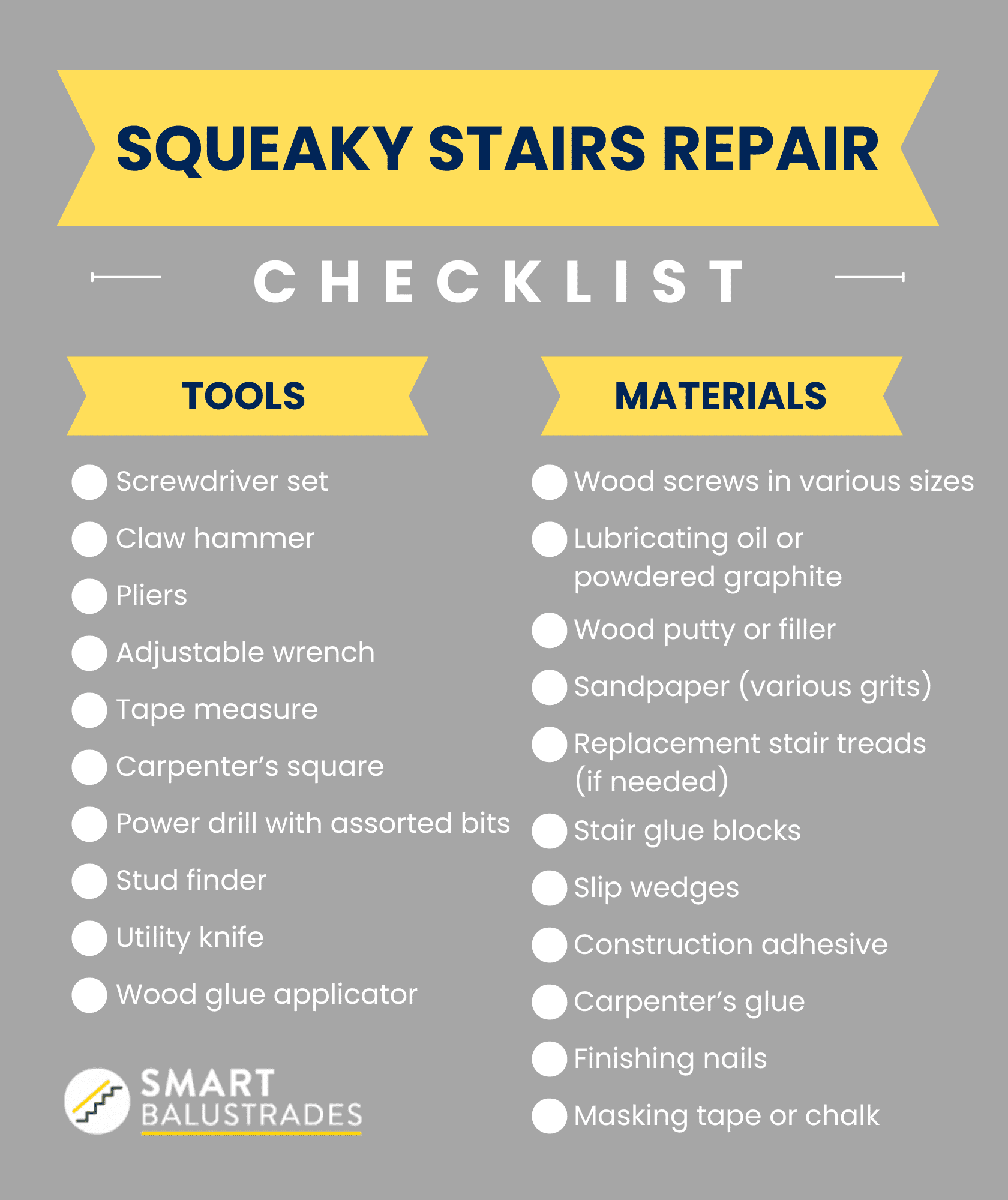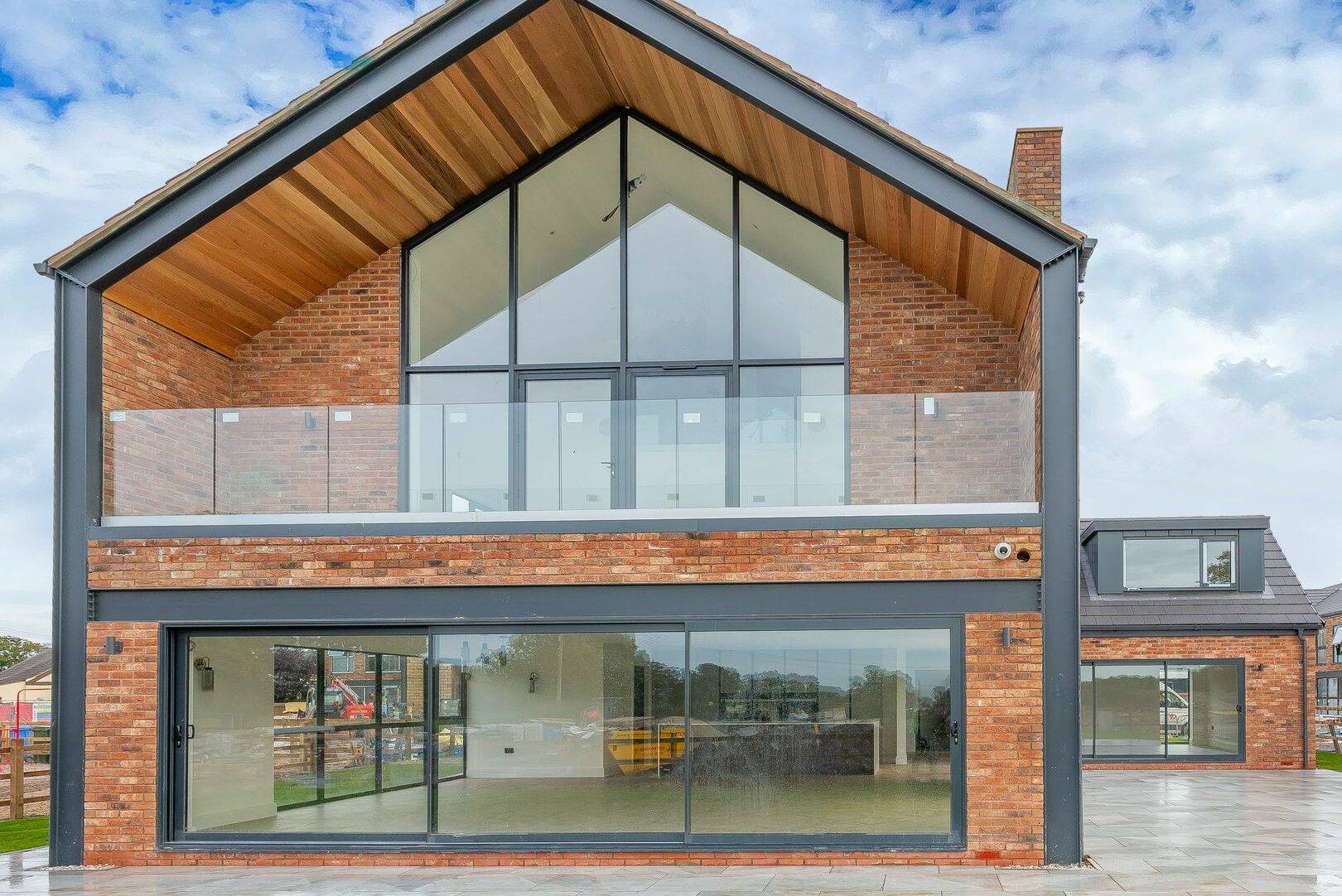Tired of the annoying squeaks from your stairs? Squeaky stairs not only disturb the peace in your home but may also indicate underlying problems. If ignored, these issues can escalate, jeopardising the stability and safety of your staircase. It’s essential to tackle this problem promptly.
Understanding the causes of squeaky stairs
Identifying the root cause of stairs is essential, in order to fix them effectively. Various factors contribute to these noises, which you’ll need to understand before undertaking repairs. Some of the common causes are:
Loose or damaged stair treads:
One common culprit behind stairs is loose stair treads. Over time regular foot traffic can wear them down and cause them to loosen, resulting in friction against the staircase framework.
Staircase settling or shifting:
Staircases naturally shift as time goes by leading to squeaks or other noises. This settling process can be influenced by factors such as temperature changes, humidity levels and the overall structural integrity of your home. Understanding these contributing factors is key to finding lasting solutions for your staircase issues.
Lack of support from stair glue blocks:
Stair glue blocks are important in providing additional support to your staircase, as well as the needed stability. When stair glue blockers become detached or even loose, they can contribute to creaks and squeaks on your staircase.
Identifying potential slip wedge issues:
Slip wedges, which are initially used to address the movement and friction between stair components, can cause squeaky stairs if installed incorrectly or have gradually gained wear and tear.
DIY tools and materials
If you are capable of DIY and do not want to seek professional help with your stair, you will need the right set of tools and materials before starting your DIY journey. It is essential you have everything you need to fix the issue, but always remember to have someone as back up for safety, and to remain safe when starting DIY. Here is a list of essential tools and materials that can help you make your repair more efficient:

A guide to fixing squeaky stairs
Step 1: Inspect and identify the squeaky spots
Begin this step by thoroughly inspecting your staircase to identify areas producing the noise. You can walk up and down the stairs to get more information and pay close attention to the sounds or movement. This makes it simple for you to identify the areas, and it also lets you mark the locations with masking tape or chalk.
Step 2: Tightening loose screws and fasteners
Be mindful to tighten any loose screws or fasteners in the designated spots using the proper tools, such as a screwdriver. In order to prevent any possible movement, you must also make sure that all connections, including handrails, balusters, and balustrades, are firmly fastened.
Step 3: Apply lubricants for immediate relief
For immediate relief, apply a lubricant such as silicone spray or powdered graphite to the friction points between the stair components. To achieve smoother movement and reduce friction, simply work the lubricant into the joints and connections.
Step 4: Installing slip wedges for additional support
Identify areas where the slip wedges can be effective in reducing movement between stair components, and insert them into the gaps or spaces. This provides additional support and stability, as long as they are fit snugly to prevent further squeaks.
Step 5: Replacing damaged or worn stair treads
If you’re still experiencing squeaks it could be because the stair treads are damaged or worn out. In that case carefully remove the affected treads. Replace them with ones made of the same size and material. Make sure to fasten them in place using nails or screws.
Step 6: Stair glue blocks
To add stability to your staircase you can use stair glue blocks. Simply apply construction adhesive underneath the glue blocks. Strategically attach them along the framework of the stairs. Be sure to allow time for the adhesive to cure and bond as this will improve the stability of your stairs.
Tips for maintaining squeak-free and secure stairs
- Choose good quality materials: opting for materials that are durable will minimise wear and tear.
- Consider carpeting or runners: covering your stairs with a runner or carpet can reduce friction and minimise the impact of foot traffic, which prevents squeaks.
- Consider a balustrade: a good-quality balustrade enhances stair safety.
- Apply a protective finish: applying a protective coating to your stair treads improves their lifespan and lowers the chance of squeaking.
- Regular inspections and maintenance routines: regularly check your staircase for wear, loose parts, or squeaks.
- Seasonal changes: staircases can be influenced by humidity and temperature changes, so adjust your maintenance routine accordingly.
- Check handrails and balustrades: make sure your handrails and balustrades are firmly attached to prevent squeaking.
- Act immediately: address squeaks or issues promptly to prevent them from getting worse.
- Tighten loose components: regularly tightening loose screws or fasteners helps keep your staircase sturdy.
Conclusion
In conclusion, resolving squeaky stairs is vital for a peaceful home and the long-term stability of your staircase. Understanding issues like loose treads, slip wedges, and support from glue blocks allows for effective DIY fixes using essential tools and materials. The step-by-step guide highlights the importance of inspection, tightening components, and using lubricants for immediate relief.
Installing slip wedges, replacing damaged treads, and applying construction adhesives enhance stability. To maintain squeak-free stairs, choose quality materials, consider carpeting, and perform regular inspections. Adjust your maintenance routine for seasonal changes, tighten loose components, and promptly address issues to ensure a secure and silent staircase. A well-maintained staircase not only fosters a peaceful environment but also mitigates the risk of future problems. So, take the necessary steps for a secure and quiet staircase in your home.






